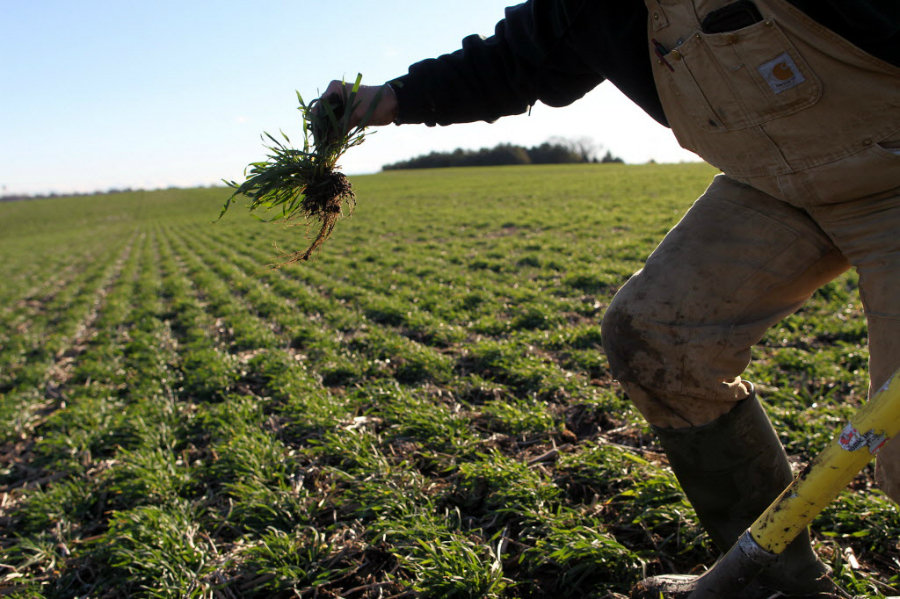
As the effects of climate change become more apparent in Zimbabwe, traditional farming methods, like no-till farming, are proving, in some cases, to increase productivity and save money.
Preparing his three-hectare of land for planting each year used to take Musafare Chiweshe – or the laborers he hired – two weeks. Now it takes just hours. Better yet, the land is producing a crop even as southern Africa’s droughts grow stronger and more frequently, a problem linked to climate change. That’s because he is no longer plowing a portion of his farm, but instead planting his seeds directly into the soil, a water-conserving technique called “no-till” farming.
“Come next year you will find even bigger crops in my field,” promised the 67-year-old retired bus driver, who this year expects to harvest 2 tonnes of maize from a half-hectare “no-till” land.
No-till farming is hardly new. Three decades ago, Zimbabwe’s commercial farms adopted the technique and it has been promoted by Zimbabwe research and development organizations since 2004. But it is seeing new popularity among small-scale farmers in Zimbabwe as many, shaken by a recent long drought that killed crops, look for ways to avoid a repeat of those losses the next time drought returns.
About 300,000 small-scale farmers in Zimbabwe, most of whom depend on rainfall to water their crops, are now using the no-till farming system. Besides planting seeds directly into the soil, no-till farming involves allowing the stalks and leaves left from earlier harvests to remain on the ground, to help hold moisture and eventually add nutrients to the soil, building soil fertility over time. Often weeds are sprayed with herbicides rather than removed by digging them from the soil.
The technique has had problems of its own over the last growing season, marked by flooding and heavy rains. In some areas where soils are sandy, farmers practicing no-till farming produce no higher than those of farmers who plowed their land.
本时文内容由奇速英语国际教育研究院原创编写,未经书面授权,禁止复制和任何商业用途,版权所有,侵权必究!(投稿及合作联系:028-84400718 QQ:757722345)
1.What is no-till farming?
A Planting in heavy rain.
B Planting in sandy land.
C Planting without soil.
D Planting without plowing.
解析:选D。细节理解题。根据第二段中的That’s because he is no longer plowing a portion of his farm可以得知该种植法就是不用耕地直接再次种植的方法。故选D。
2.How did Musafare Chiweshe plant his crops faster this year?
A He hired many more laborers to prepare.
B He produced much fewer crops.
C He didn’t have money to plow the soil.
D He put his seeds directly into the soil.
解析:选D。细节理解题。根据第二段中的but instead planting his seeds directly into the soil可以得知他是直接播种的,因此他今年种得很快。故选D。
3.What made the no-till farming popular?
A High cost.
B Lack of rain.
C Poor land.
D High technology.
解析:选B。推理判断题。根据第四段第三句的But it is seeing new popularity among small-scale farmers in Zimbabwe as many, shaken by a recent long drought that killed crops可知是由于干旱,这种免耕种植法才受欢迎的。故选B。
4.Why did the farmers keep the stalks and leaves in the land?
A They depended other people to move them.
B They would use them as building materials.
C They wanted to make the land more fertile.
D They wanted to kill weeds with the leaves.
解析:选C。细节理解题。根据第五段第二句的to help hold moisture and eventually add nutrients to the soil, building soil fertility over time他们把植物的秸秆和叶子留在地里是想“涵养水分、让土地肥沃”。故选C。
